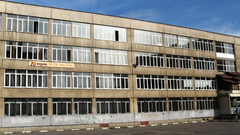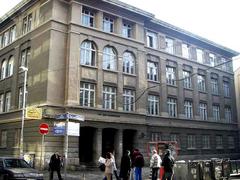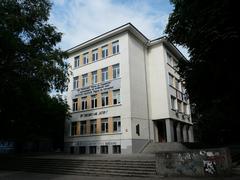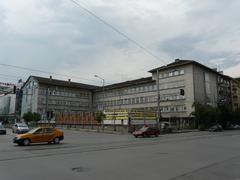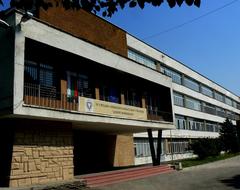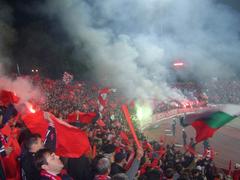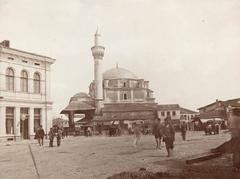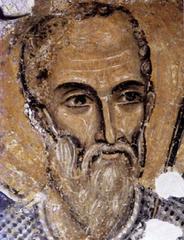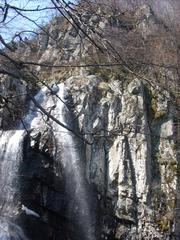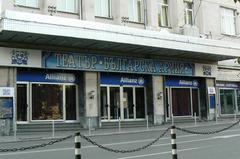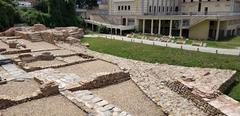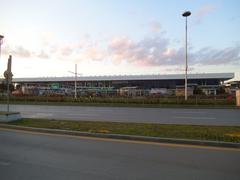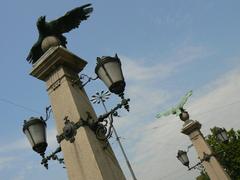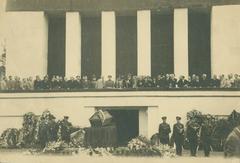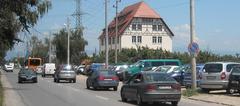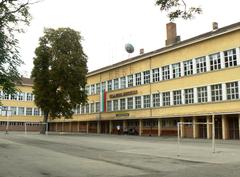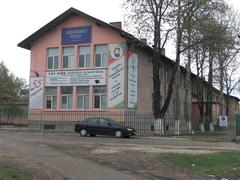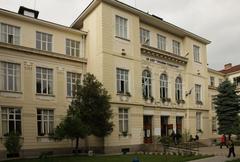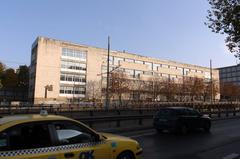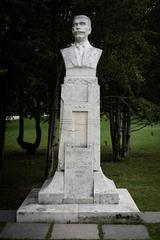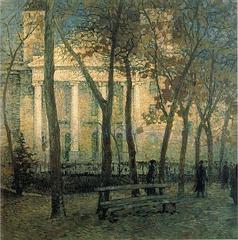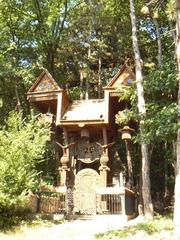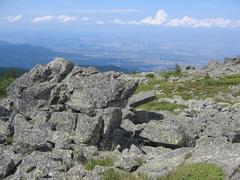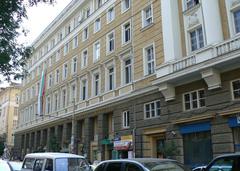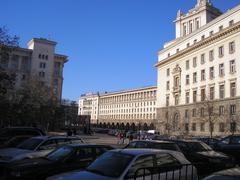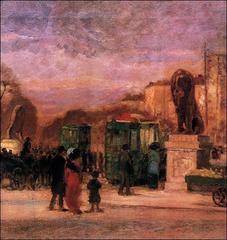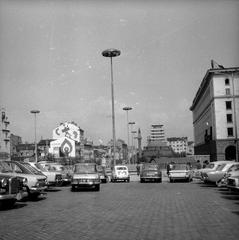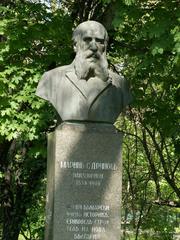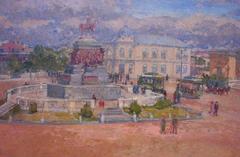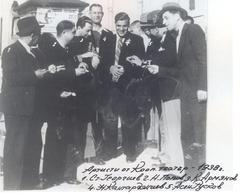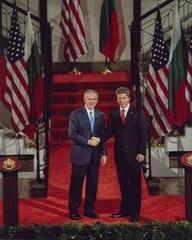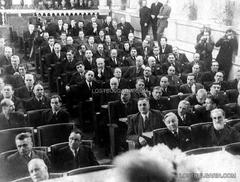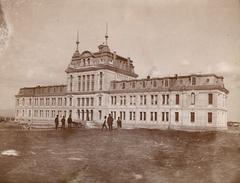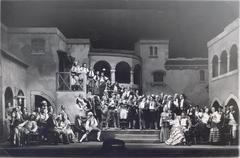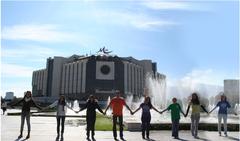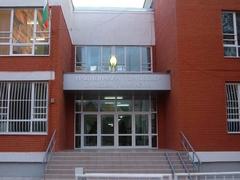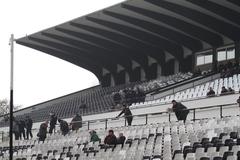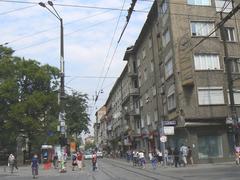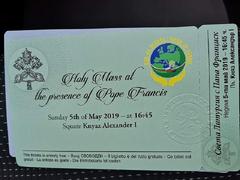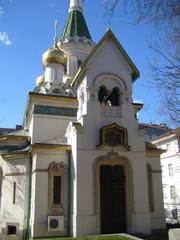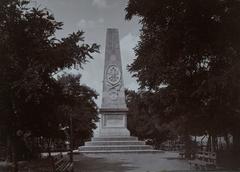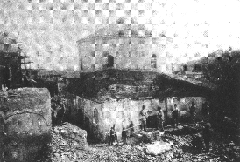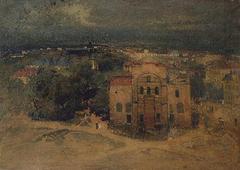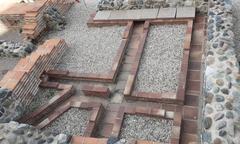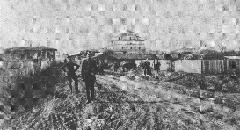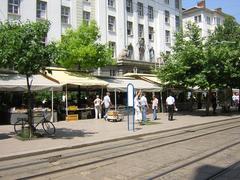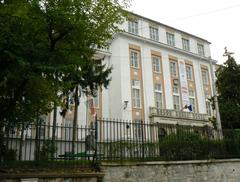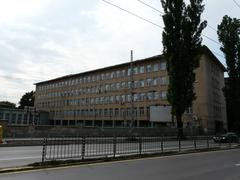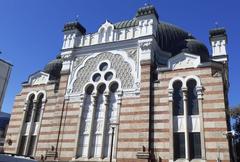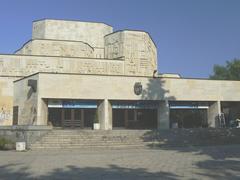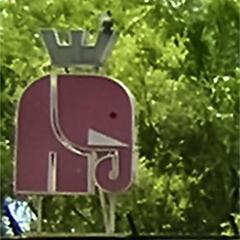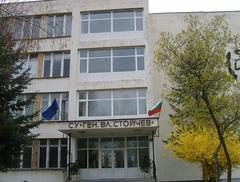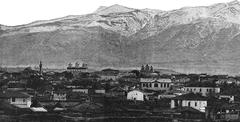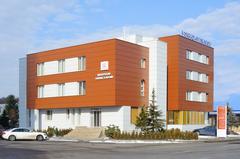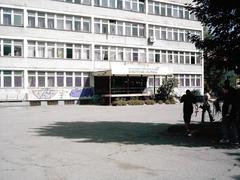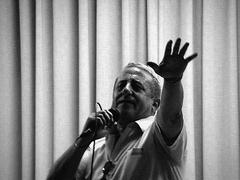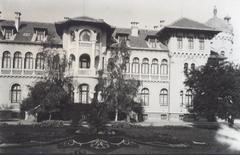Ethnographic Institute and Museum Sofia: Comprehensive Visiting Guide, Tickets, and Cultural Highlights
Date: 15/06/2025
Introduction
The Ethnographic Institute and Museum in Sofia is a premier cultural destination for those eager to immerse themselves in Bulgaria’s rich folk traditions and historical legacy. Housed in the ornate former royal palace on Alexander Battenberg Square, this institution safeguards over 50,000 artifacts, offering an unparalleled insight into the country’s regional diversity, artistry, and everyday life. As a part of the Bulgarian Academy of Sciences, the museum is both a center for scholarly research and a vibrant public space, hosting exhibitions, educational programs, and community events that keep Bulgaria’s living traditions at the forefront.
With its central location amidst Sofia’s historic landmarks, accessible facilities, and a dynamic program of permanent and temporary displays, the Ethnographic Institute and Museum is a must-visit for academics, cultural enthusiasts, and travelers alike. This detailed guide provides all the essential information—visiting hours, ticket prices, collection highlights, tips for your visit, and nearby attractions—to help you plan an enriching and memorable experience.
Table of Contents
- Origins and Historical Development
- Museum Location and Setting
- Collections and Thematic Exhibitions
- Temporary and Rotating Exhibitions
- Exhibition Design and Visitor Experience
- Cultural Significance and Educational Value
- Practical Visitor Information
- Travel Tips and How to Get There
- Visitor Tips for a Memorable Experience
- Nearby Points of Interest
- Accessibility for International Visitors
- Safety and Visitor Conduct
- Frequently Asked Questions (FAQ)
- Conclusion and Final Tips
- References and Further Reading
Origins and Historical Development
Founded in 1892 as part of the National Museum and becoming an independent institution in 1906, the Ethnographic Institute and Museum played a crucial role in shaping Bulgaria’s national identity following liberation from Ottoman rule. Early curators traversed the country collecting costumes, tools, and ritual objects, establishing one of the Balkans’ richest ethnographic collections. In 1940, the museum became part of the Bulgarian Academy of Sciences, reinforcing its dual mandate of research and cultural preservation. The 2010 merger with the Institute of Ethnology and Folklore Studies (IEFSEM) further expanded its focus, encompassing both tangible and intangible heritage (Ethnographic Museum Sofia, Bulgarian Academy of Sciences).
Museum Location and Setting
The museum is located at 1 Knyaz Alexander I Square, Sofia, in the eastern wing of the former royal palace—a landmark of 19th-century architecture. Its central position places it within walking distance of major Sofia historical sites, such as the National Art Gallery, the Presidency, and St. George Rotunda Church. The setting itself, with its grand halls and decorative interiors, enhances the visitor experience by providing a majestic backdrop to the exhibitions (bg-guide.org).
Collections and Thematic Exhibitions
Bulgarian Folk Art and Crafts
The museum’s permanent displays showcase the evolution of Bulgarian traditional culture from the 17th to the 20th centuries, with a focus on:
- Textiles and Costumes: An extensive collection from all regions, including embroidered shirts, aprons, vests, sashes, and bridal costumes. Each garment reflects unique regional techniques and symbolism (Bulgaria Guide).
- Adornments and Jewelry: Belts, necklaces, headpieces, and more, decorated with filigree, beads, and stones, demonstrate the skills of local artisans and the influence of neighboring cultures.
- Wood-Carvings and Furniture: Ornate household objects, religious icons, and carved furniture illustrate rural life and craftsmanship.
- Clay and Copper Utensils: Everyday objects featuring geometric or floral decorations, reflecting both utility and artistry.
Home Interiors and Domestic Life
The museum recreates traditional Bulgarian home interiors, giving visitors the chance to step into rural living rooms, kitchens, and religious corners. These immersive spaces, furnished with authentic artifacts and textiles, highlight differences in regional and social lifestyles.
Church Plates and Ritual Objects
The collection of church plates and ritual items—censers, chalices, candlesticks, and crosses—crafted from silver, copper, and brass, reveals the enduring link between folk traditions and Orthodox Christianity.
Temporary and Rotating Exhibitions
Regularly changing exhibitions provide deeper insight into specific themes:
- Traditional Festivals and Rituals: Costumes and props from Kukeri games, spring rituals, and wedding ceremonies.
- Folk Music and Instruments: Displays of bagpipes, flutes, and lutes, plus archival recordings and photos.
- Craftsmanship and Techniques: Focused on weaving, pottery, and metalwork, often with live demonstrations and workshops.
- International Collaborations: Joint projects with other Balkan and European institutions foster cross-cultural dialogue (about-sofia.com, bas.bg).
For up-to-date information on current exhibitions, visit the Sofia tourism website.
Exhibition Design and Visitor Experience
- Contextual Displays: Objects are presented within reconstructed rooms or dioramas to illustrate their use.
- Multimedia Presentations: Audio-visual materials, oral histories, and interactive screens deepen understanding.
- Bilingual Labels: Most exhibits are labeled in Bulgarian and English.
- Guided Tours: Available in Bulgarian and English for individuals or groups; booking in advance is recommended (Bulgaria Guide).
Cultural Significance and Educational Value
The museum plays a pivotal role in safeguarding Bulgaria’s national and regional identities. Through exhibitions, field research, and scholarly publications, it promotes understanding of the country’s customs, beliefs, and artistic achievements. Educational programs and workshops are offered for all ages, supporting intergenerational knowledge transfer and active engagement with folk traditions (bulgariafocus.com).
Practical Visitor Information
Visiting Hours:
- March 1 – October 31: 10:00 – 18:00
- November 1 – February 28: 10:00 – 17:30
- Closed: Mondays and public holidays
Ticket Prices:
- Adults: BGN 10.00
- Pupils, Students, Pensioners: BGN 5.00
- Guided Tour (Bulgarian/English): BGN 30.00
Children under 7 enter free. Group discounts are available. Tickets can be purchased at the entrance or online via the official website.
Accessibility: The museum has partial wheelchair accessibility; some historical areas may be challenging. Contact the museum for details or specific accommodations.
Facilities:
- Cloakroom
- Museum shop (souvenirs, books, craft replicas)
- Restrooms
- Wardrobe for bags and coats
Contact:
- Address: 1 Knyaz Alexander I Sq., Sofia
- Phone: +359 0879 40 93 18
- Email: [email protected]
- Educational Programs: +359 879 80 79 47 (Mon-Fri, 9:00–18:00)
Travel Tips and How to Get There
The museum is easily accessible via tram and bus lines, with nearby stops. Parking is available in the vicinity. Early afternoons on weekdays are generally less crowded. Combine your visit with other nearby attractions for a full cultural experience.
Visitor Tips for a Memorable Experience
- Allow 1.5–2 hours for your visit.
- Book a guided tour for deeper insight.
- Check the museum’s schedule for workshops and special events.
- Photography is permitted without flash in most areas.
- Use bilingual labels and guides for enhanced understanding.
- Purchase authentic Bulgarian crafts in the museum shop.
Nearby Points of Interest
- National Art Gallery (in the same palace complex)
- Archaeological Institute and Museum
- St. George Rotunda
- Presidency Building
- Knyaz Alexander I Square
Accessibility for International Visitors
English-language exhibit labels, brochures, and guided tours are available. Sofia’s tourist information centers provide maps and additional directions (visitsofia.bg).
Safety and Visitor Conduct
Respect museum rules: do not touch exhibits, eat, or drink in display areas. Observe photography restrictions and behave considerately toward staff and other visitors.
Frequently Asked Questions (FAQ)
Q: How can I buy tickets?
A: Purchase at the entrance or via the official website.
Q: What are the best times to visit?
A: Weekday mornings and early afternoons are less crowded.
Q: Is the museum wheelchair accessible?
A: Partially; contact the museum for detailed information.
Q: Are guided tours available in English?
A: Yes, for an additional fee.
Q: Are there dining options nearby?
A: Numerous cafes and restaurants are within walking distance.
Conclusion and Final Tips
The Ethnographic Institute and Museum in Sofia is a treasure trove of Bulgarian folk art, history, and living traditions—an essential stop for anyone visiting the capital. Its extensive collections, engaging exhibitions, and educational outreach make it a cornerstone of Sofia’s cultural scene. Plan ahead to make the most of your visit: check current exhibitions, book guided tours, and explore the vibrant area surrounding the museum.
Stay updated on events and exhibitions via the official museum website and Bulgarian Academy of Sciences portal. For an enhanced experience, download the Audiala app for audio guides, and follow the museum’s social media for the latest news.
